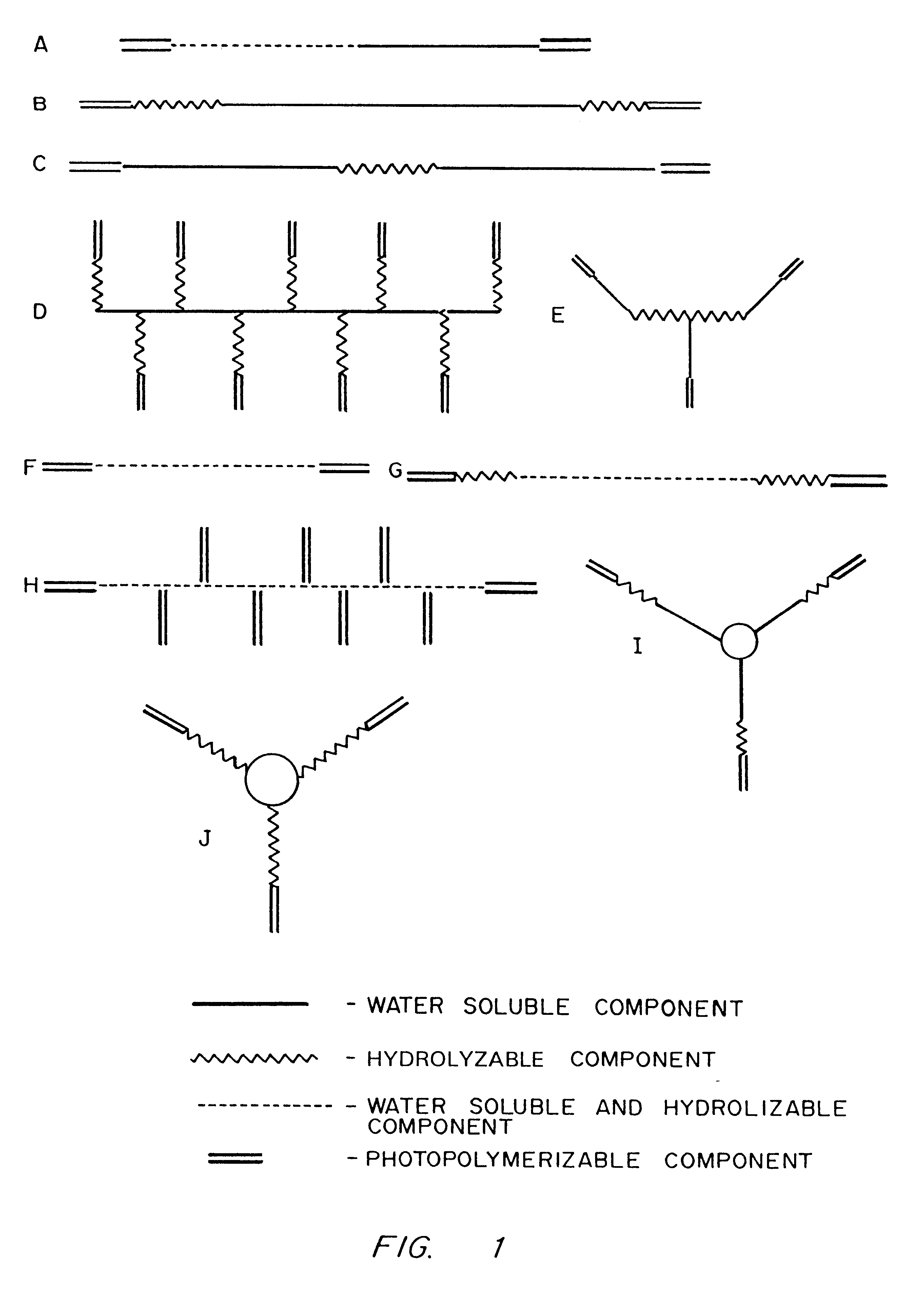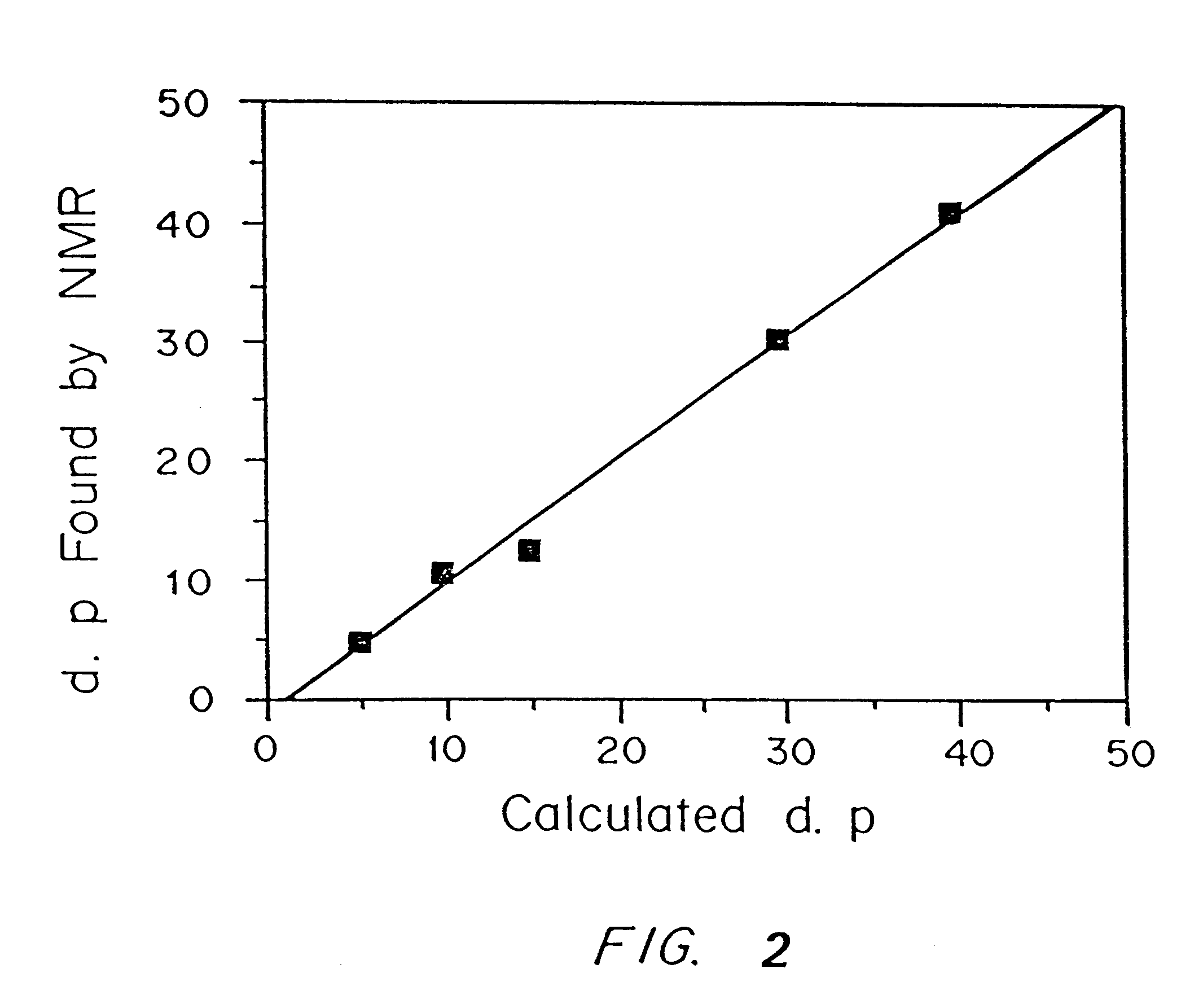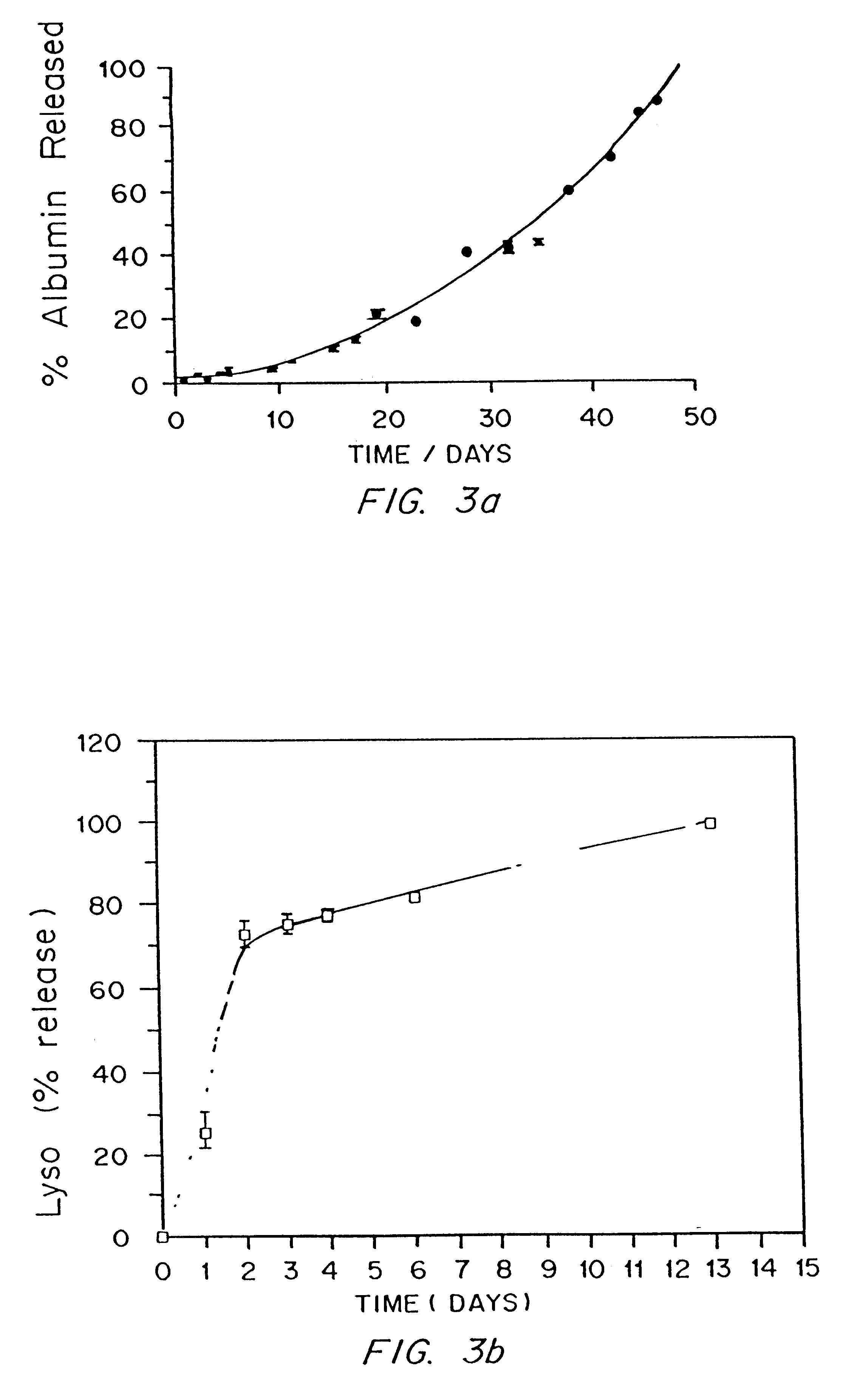Photopolymerizable biodegradable hydrogels as tissue contacting materials and controlled-release carriers
a biodegradable, photopolymerizable technology, applied in the direction of cell encapsulation, powder delivery, granular delivery, etc., can solve the problems of poor biocompatibility, frequent formation of post-surgical adhesions involving organs of the peritoneal cavity and the peritoneal wall, and insufficient use in the united states. , to achieve the effect of excellent biocompatibility, high hydrophilicity and water solubility, and rapid poly
- Summary
- Abstract
- Description
- Claims
- Application Information
AI Technical Summary
Benefits of technology
Problems solved by technology
Method used
Image
Examples
example 1
Synthesis of Photopolymerized Biodegradable Hydrogels.
PEG-based Hydrogels
PEG-based biodegradable hydrogels are formed by the rapid laser or UV photopolymerization of water soluble macromers. Macromers, in turn, are synthesized by adding glycolic acid oligomers to the end groups of PEG and then capping with acrylic end groups. The PEG portions of the macromers confer water solubility properties, and subsequent polymerization results in cell-nonadhesive hydrogels. Glycolic acid oligomers serve as the hydrolyzable fraction of the polymer network, while acrylic end groups facilitate rapid polymerization and gelation of the macromers.
In preparation for synthesis, glycolide (DuPont) or DL-lactide (Aldrich) was freshly recrystallized from ethyl acetate. PEG oligomers of various molecular weight (Fluka or Polysciences) were dried under vacuum at 110.degree. C. prior to use. Acryloyl chloride (Aldrich) was used as received. All other chemicals were of reagent grade and used without further p...
example 2
Use of Multifunctional Macromers
30 g of a tetrafunctional water soluble PEG (MW 18,500) (PEG 18.5 k) was dried by dissolving the polymer in benzene and distilling off the water benzene azeotrope. In a glove bag, 20 g of PEG 18.5 k, 1.881 g of glycolide and 15 mg of stannous octoate were charged into a 100 ml round bottom flask. The flask was capped with a vacuum stopcock, placed into a silicone oil bath and connected to a vacuum line. The temperature of the bath was raised to 200.degree. C. The reaction was carried out for 4 hours at 200.degree. C. and 2 hours at 160.degree. C. The reaction mixture was cooled, dissolved in dichloromethane and the copolymer was precipitated by pouring into an excess of dry ethyl ether. It was redissolved in 200 ml of dichloromethane in a 500 ml round bottom flask cooled to 0.degree. C. To this flask, 0.854 g of triethylamine and 0.514 ml of acryloyl chloride were added under nitrogen atmosphere and the reaction mixture was stirred for 12 h. at 0.degr...
example 3
Synthesis of a Photosensitive Macromer Containing DL-lactide
PEG (MW) 20,000) (PEG 20 k) was dried by dissolving in benzene and distilling off the water benzene azeotrope. In a glove bag, 32.43 g of PEG 20 k, 2.335 g of DL-lactide and 15 mg of stannous octoate were charged into a 100 ml round bottom flask. The flask was capped with a vacuum stopcock, placed into a silicone oil bath and connected to a vacuum line. The temperature of the bath was raised to 200.degree. C. The reaction was carried out for 4 hours at 200.degree. C. The reaction mixture was cooled, dissolved in dichloromethane and the copolymer was precipitated by pouring into an excess of dry ethyl ether. It was redissolved in 200 ml of dichloromethane in a 500 ml round bottom flask cooled to 0.degree. C. To this flask, 0.854 g of triethylamine and 0.514 ml of acryloyl chloride were added under nitrogen atmosphere and the reaction mixture was stirred for 12 hours at 0.degree. C. The triethyl amine hydrochloride was separa...
PUM
| Property | Measurement | Unit |
|---|---|---|
| solubility | aaaaa | aaaaa |
| molecular weight | aaaaa | aaaaa |
| molecular weight | aaaaa | aaaaa |
Abstract
Description
Claims
Application Information
 Login to View More
Login to View More - R&D
- Intellectual Property
- Life Sciences
- Materials
- Tech Scout
- Unparalleled Data Quality
- Higher Quality Content
- 60% Fewer Hallucinations
Browse by: Latest US Patents, China's latest patents, Technical Efficacy Thesaurus, Application Domain, Technology Topic, Popular Technical Reports.
© 2025 PatSnap. All rights reserved.Legal|Privacy policy|Modern Slavery Act Transparency Statement|Sitemap|About US| Contact US: help@patsnap.com



